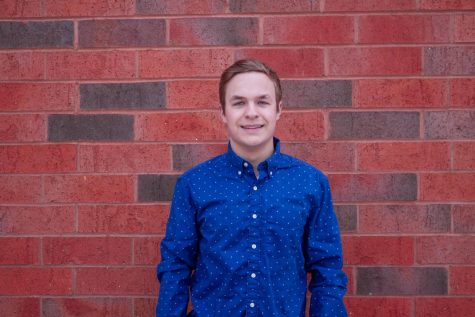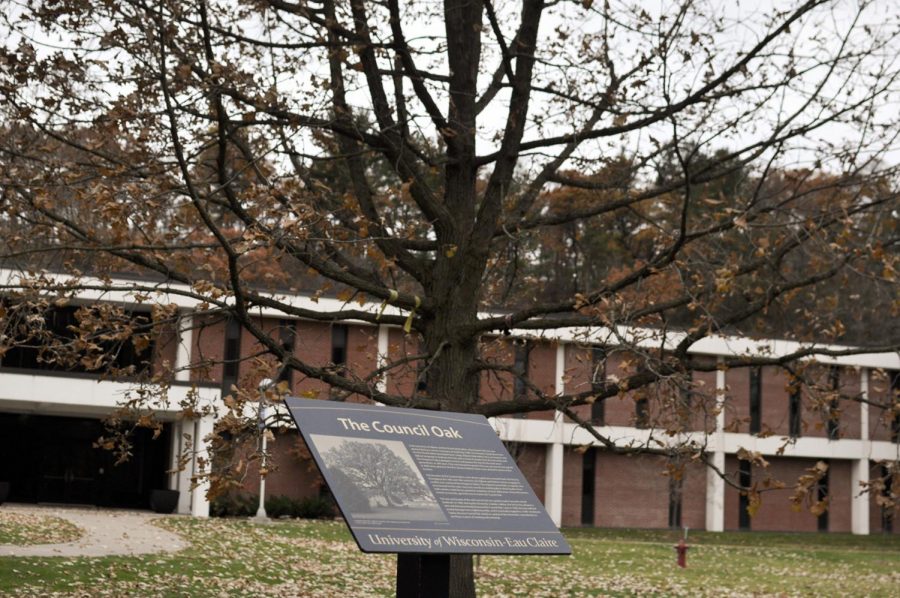One step at a time
UW-Eau Claire recognizes the land it inhabits
Photo by Alee Erickson
The Council Oak’s standing symbolizes the sacred land that UW-Eau Claire is placed on.
“We need to not erase Native people’s histories and forget that they were there,” Tressa Lange, fourth-year environmental geography and American Indian studies student and president of the Inter-Tribal Student Council, said.
The university has adopted a land recognition statement to be used by faculty and administration, as well as the return of the school’s old seal, which signifies a very important landmark to the local tribes, Lange said.
The changes were formally announced Oct. 16 on Indigenous People’s Day during an event where the land was formally recognized by the university, along with the hanging of the flags of the twelve tribal nations of Wisconsin, Lange said.
The university uses the land recognition statement to signify that the university sits on Dakota and Ojibwe lands, and this is not something most students are aware of, Lange said.
“Anywhere you really stand in the United States, you’re on ancestral land,” Lange said.
The significance of the land that campus sits on is that it was the meeting place for people like the Dakota and Ojibwe to meet and work out their disputes in a neutral territory at what is called the “Council Oak,” which is located behind Davies, Gary Garvin, a fourth-year business marketing student and member of ITSC, said.
Although the statement and the seal might be a step in the right direction, Garvin said he feels the majority of students are mostly uneducated about the history of the land.
He said his high school in his hometown of Black River Falls has been doing good things in educating the youth about the Ho-Chunk Nation and hopes the university can follow such an example.
“When I’m on campus, it’s kind of a culture shock to me to see how oblivious non-Native people are to the history,” Garvin said.
There also remains an issue with the actual statement, which reads:
“I/We acknowledge that the University of Wisconsin-Eau Claire occupies the sacred and ancestral lands of Indigenous Peoples. I/We honor the land of the Ojibwe and Dakota Nations.”
Garvin said the statement left out a third tribe: the Ho-Chunk. Eau Claire was a place where the three tribes were inter-married, and he said he is “peeved” that the university has left them out.
As far as getting this statement created and the seal reinstated, Lange said that it is a good start toward a better appreciation of the land. However, she said there is still room for improvement.
All the recent efforts of the ITSC have been focused on the land recognition statement and the seal, so now the organization needs time to regather and focus on how else the university could be improved upon in this area, Lange said.
“I think what Eau Claire can do better is they can start to develop and foster relationships with the tribal communities in this area,” Garvin said.
One way the tribal communities will be interacting with non-Native people is through the pow-wow that is happening on Saturday, Nov. 9 as part of Native American Heritage Month. Attendants need not be of Native heritage. In fact, non-Native attendance is encouraged, Garvin said.
“We just want people to be curious and ask questions,” Lange said.
Plueger can be reached at pluegemf2903@uwec.edu.

Miles Plueger is a third-year public relations and marketing student. He spent quarantine teaching himself guitar. He also makes a mean chicken stir fry.


